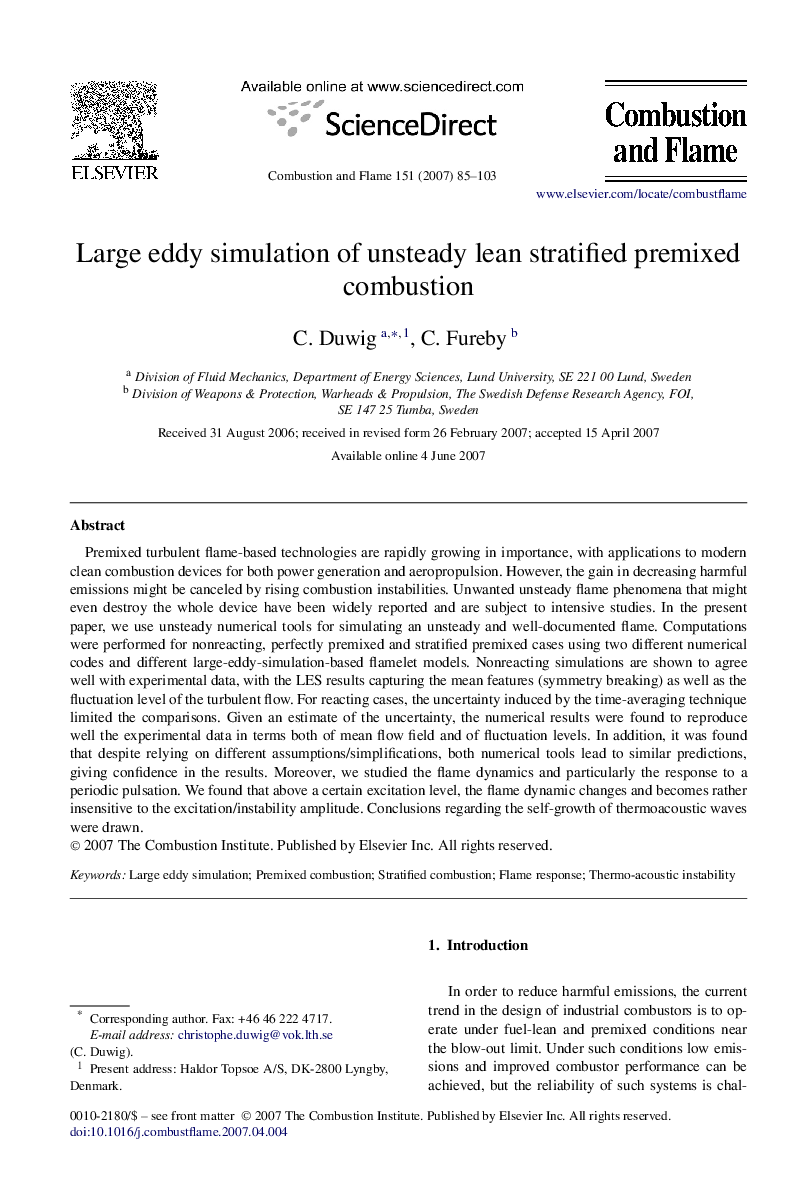| Article ID | Journal | Published Year | Pages | File Type |
|---|---|---|---|---|
| 170093 | Combustion and Flame | 2007 | 19 Pages |
Premixed turbulent flame-based technologies are rapidly growing in importance, with applications to modern clean combustion devices for both power generation and aeropropulsion. However, the gain in decreasing harmful emissions might be canceled by rising combustion instabilities. Unwanted unsteady flame phenomena that might even destroy the whole device have been widely reported and are subject to intensive studies. In the present paper, we use unsteady numerical tools for simulating an unsteady and well-documented flame. Computations were performed for nonreacting, perfectly premixed and stratified premixed cases using two different numerical codes and different large-eddy-simulation-based flamelet models. Nonreacting simulations are shown to agree well with experimental data, with the LES results capturing the mean features (symmetry breaking) as well as the fluctuation level of the turbulent flow. For reacting cases, the uncertainty induced by the time-averaging technique limited the comparisons. Given an estimate of the uncertainty, the numerical results were found to reproduce well the experimental data in terms both of mean flow field and of fluctuation levels. In addition, it was found that despite relying on different assumptions/simplifications, both numerical tools lead to similar predictions, giving confidence in the results. Moreover, we studied the flame dynamics and particularly the response to a periodic pulsation. We found that above a certain excitation level, the flame dynamic changes and becomes rather insensitive to the excitation/instability amplitude. Conclusions regarding the self-growth of thermoacoustic waves were drawn.
